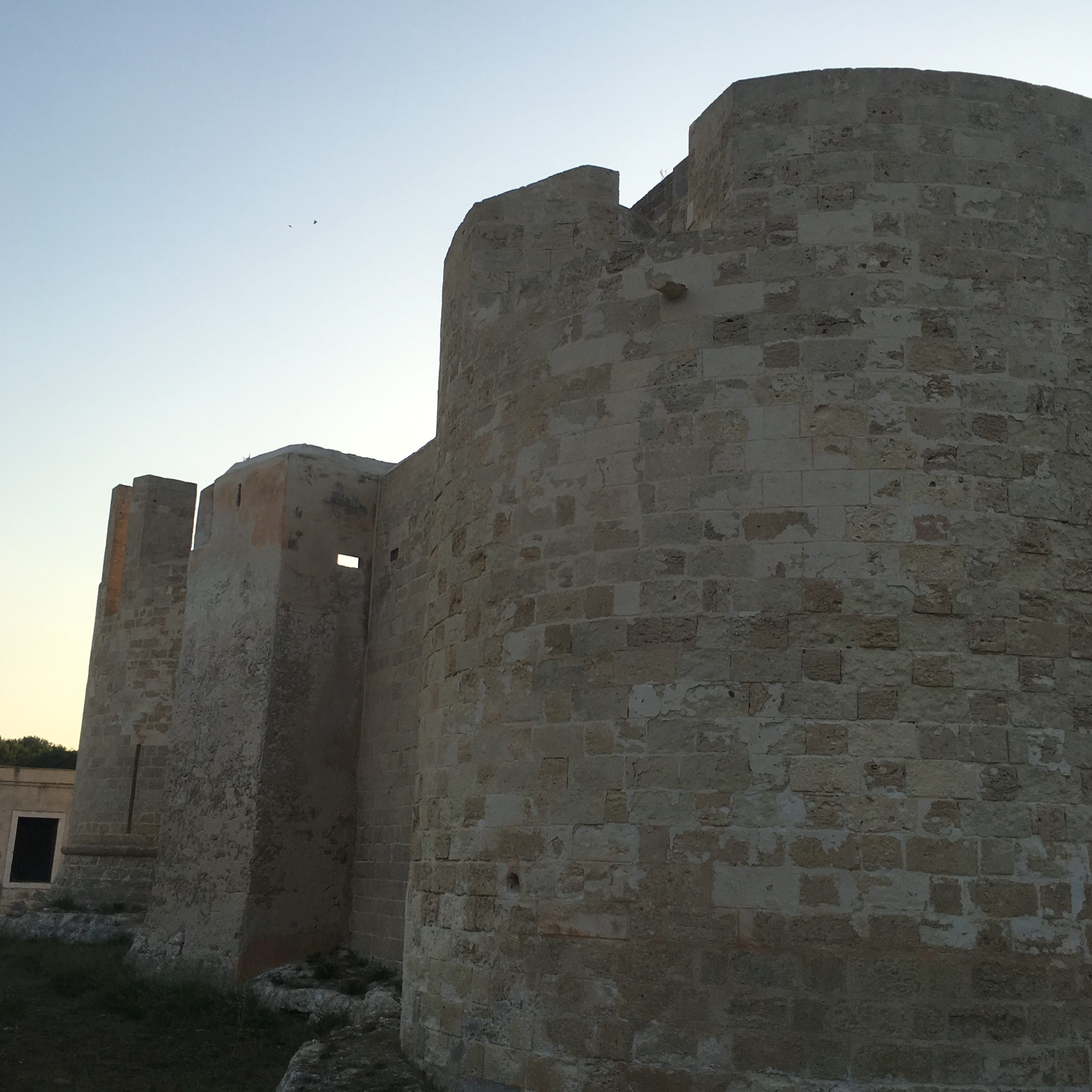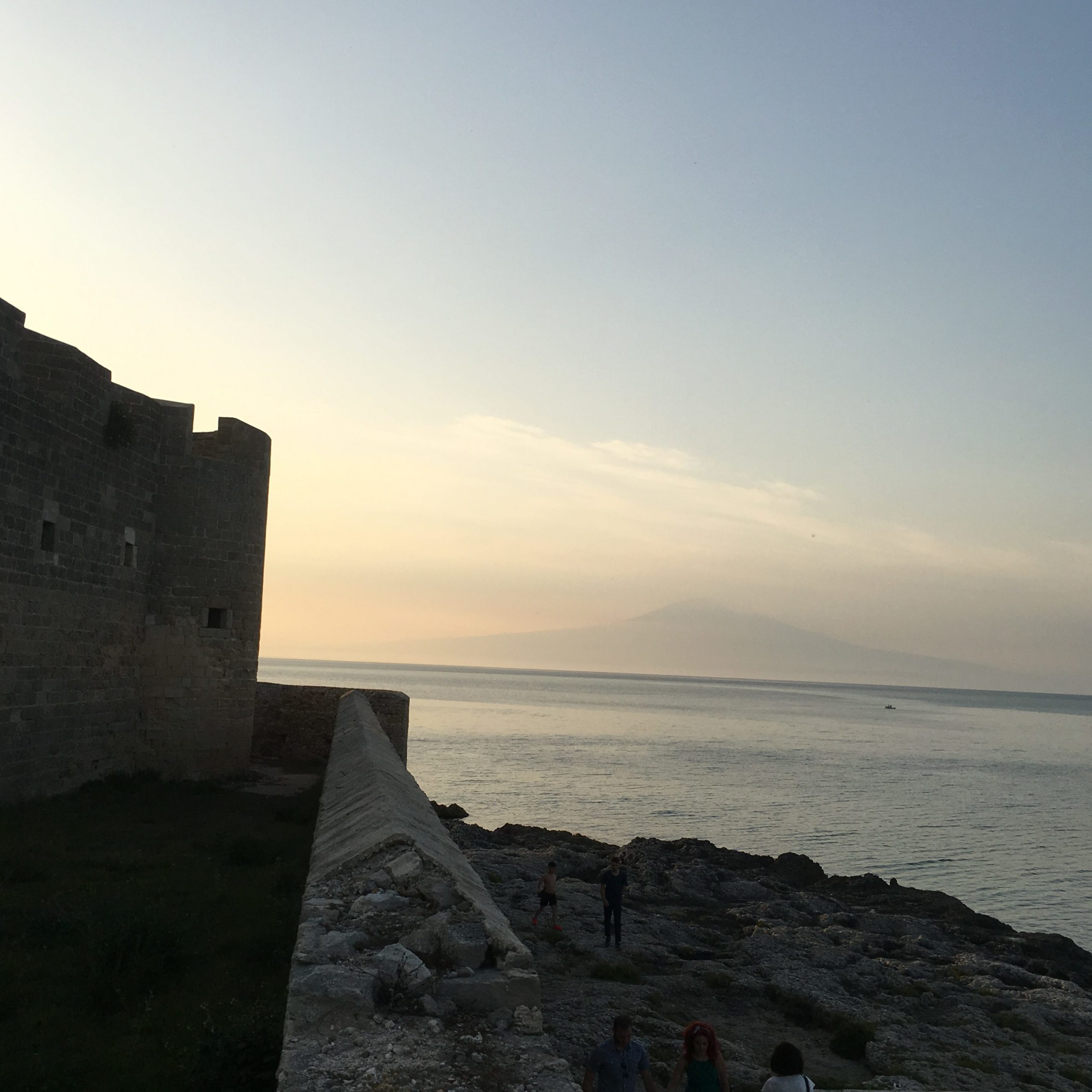After a careful structural study by Federico II, between 1232 and 1240 an imposing building system was born on the site of previous fortification works called “Castello Maniace”, which was one of the first castles that Federico himself had built in Sicily.
Initially this fortification was actually a temple, built by the Greeks, dedicated to Hera which then disappeared under the sumptuous residence of Verre, to then become a stronghold with the colonization of the Byzantines before the current fortification of Frederick II which is the only trace that we keep of the various transformations. Throughout the centuries, this site was a key point of great strategic importance for the defense of the city; in fact it stands at the marginal mouth of the Port of Syracuse , on the extreme tip of the Island of Ortigia, facing the promontory of Plemmirio. The traditional denomination of origin associates the origin of the name to the Byzantine general Giorgio Maniace who conquered Syracuse in 1038, freeing it from the Arabs, starting on this same site the construction of a fortress that was probably never completed. Despite the serious damage suffered by the earthquake of 1693, the castle retains its thirteenth-century external structure intact. Much more substantial damage occurred with the explosion of the powder warehouse in 1704, which destroyed the northwest wing of the castle. This fortification was originally reachable only by a drawbridge (filled in 500) which made it totally impregnable and was surrounded by a moat which fully met the defense needs. The recesses for housing the drawbridge are still visible. Before the current restorations, this fortification looked like an abandoned stone quarry after being excavated. The building was built using three different types of stone: limestone, lava (used for cutting the L-shaped parallelepiped ashlars) and sandstone (used for filling the sidewalls). Its structure has a square plan of 51 meters per side 12 meters high, closed by a mighty perimeter wall (3 and a half meters thick) with four cylindrical towers at the corners from which spiral staircases of 52 interlocking stone steps take place , which still today represent authentic masterpieces of medieval engineering, each of these stairways was illuminated by a suggestive light from seven release wounds. The interior was conceived as a modular grid of five basic elements for each side, corresponding to meshes covered by a cross vault, closed to form a portico with a central atrium. In the majestic curtain wall the graceful Gothic shapes of the windows are still legible and on the north side the thirteenth-century marble portal; of the same period and of the same style as the portal and the trifola on the west side of which few but interesting fragments remain. It is accessed through a splendid ogival portal, covered with polychrome marble and surmounted by the Spanish coat of arms of 1614 (Vermexian door, ancient access to the drawbridge). On the sides of the portal there are two niches intended to contain the two bronze rams of the IV BC from the Temple of Hera, which were placed there by Giorgio Maniace ; we only have one that is visible today in the Salinas Museum in Palermo, the other was melted down during the 1848 riots to build a cannon. The interior of this fortification appeared as a single room defined by 16 free columns, 4 corner semi-columns and 16 perimeter semi-columns, which supported 25 bays of equal size with cross vaults and illuminated by single-lancet windows which were arranged around to a large central open square courtyard, this geometric shape and the axis of the building oriented towards Mecca refer to the Arab tradition while some elements such as the refinement of the decorative details and the planimetric layout also refer to French traits. The unusual checkerboard arrangement of the columns, typical of fortified mosques and extraneous to western architectural typology, not only had no military function, but still today is not reflected in any other Slavic construction of Frederick: Given its structure, the presence of the single immense hall of 2500 square meters surrounded by columns on the ground floor would be inconceivable with the ancient residential function of the castle, if one did not admit the original existence of an upper floor (entirely collapsed) used to home. Plan whose real existence would have been accepted, as well as for logical reasons, also the evident architectural finds that have nothing to do with the ground floor. Subsequently the castle was used for military functions. The center exalted by the four angular columns, beams of granite marble (only two surviving, could suggest the existence of a throne, which in Federico’s absolutist vision exalted the egocentric presence of his figure. Inside the castle the dividing walls and the mezzanine floor added in later periods have partially masked the still existing columns with their highly worked capitals with hooked leaves in which it is still possible to identify four zoomorphic figures, arranged two on each side, of probable symbolic meaning (two figures of lions and a hippogriff); and with their cross bays of the ancient Swabian structure (brought to light after a temporary restoration). On the south-east side we find the secondary portal of the castle. Near the west tower there is access to the famous “queen’s bathroom” which can be accessed from a small door that via a staircase carved into the rock with a drop of 9 meters; at the bottom almost at sea level we find an environment of about 1 meter on each side, a room with seats and a marble basin always filled with fresh spring water. On the walls you can still see small excavations so called “niches” where the lanterns were probably placed. of the Giudecca.

